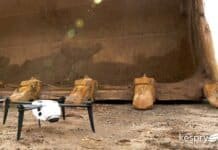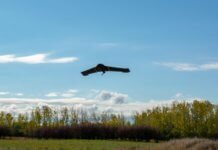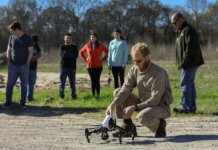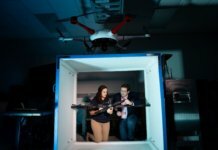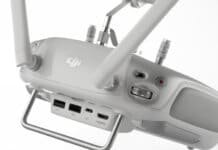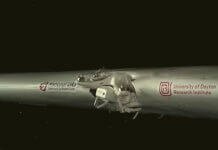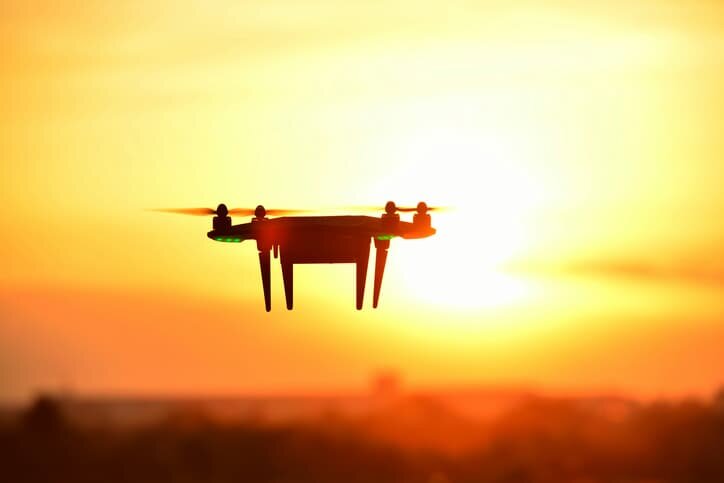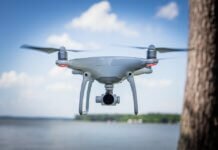On March 7-8, stakeholders will gather at Exhibition Centre Nuremberg to attend U.T.SEC – the Unmanned Technologies & Security Expo & Conference. Their discussions will focus on the use of drones to improve security and protection against these technologies in security-related structures. In the run-up to the trade fair and conference, NürnbergMesse and Butter and Salt tech marketing GmbH spoke with Wilfried Joswig, director of the VfS (Association for Security Technology), about the challenges of unmanned aircraft systems (UAS).
How have the security sector and the tasks changed in this era of digitalization?
Wilfried Joswig (WJ): In the security sector, digitalization is nothing new. And it has actually brought about new opportunities: For example, in the case of sensor systems, where, thanks to improved analyzing units or networking of systems, it has been possible to significantly reduce false alarm rates and, as a result, increase acceptance by users.
Has digitalization resulted in new tasks or threats?
WJ: Of course there are also new challenges. The networking of systems imposes new requirements on network security and availability. With every additional network element installed, the number of options for attacking my network increases. In this context, special requirements on system hardening are necessary at the technical, organizational and human level. Unfortunately, not everyone is aware of this or it is not being implemented rigorously.
What role do unmanned systems play in this context?
WJ: In the meantime, UAS are an integral part of all risk analyses and security concepts as both a practical system and a security risk.
Have UAS changed the type of danger?
WJ: UAS have changed the type of danger significantly. Previously, perimeter security ended at the top of the fence or the scaling barrier. With UAS, this rule no longer applies. We also need to include the airspace above the perimeter fence in our security concept.
Can UAS take over certain jobs – and how does this affect service providers from the security industry?
WJ: UAS can perform important roles associated with status reports and alarm verification. However, the interaction between humans and technology as part of the security services offered is still very important – e.g., the integration of UAS into security concepts, base station for the UAS, operational times, etc. In addition, the training of service providers needs to be extended to include the use of such systems.
UAS are a relatively new technology application. How do you envisage the future of unmanned systems in the security sector?
WJ: With UAS we are experiencing a very dynamic development in performance characteristics. Naturally, with every development stage, the options for applications also increase. I am thinking in particular of flight duration, speed and integration into management systems.
What legal and insurance-specific frameworks have to be in place so that UAS can be used by security service providers efficiently and systematically?
WJ: We are talking about the useful deployment of UAS as part of intervention measures. In this context, many aspects have already been regulated. One thing that considerably restricts the use of UAS is that they are only allowed to be used within the field of vision of the pilot.
Do we have to think about separate training for the use of unmanned systems in the security sector?
WJ: Of course, the use of UAS presupposes proper training of security service providers. Alongside the obvious things like flight training, it should also include a legal consideration of the special risk situation and the associated rules of contact.
Your association supports U.T.SEC. What role can this kind of trade fair play in the integration of new technology in the sector?
WJ: For us as an association, but also for users, there are diverse benefits to such an event. Particularly for a technology where changes are happening rapidly in almost all areas, a conference and trade fair for information-sharing is important. The event can serve to present the latest state of the art, to illustrate and discuss future development steps and potential applications, to discuss integration options for security concepts, to formulate requirements that users want the sector to meet, to address legal issues and the development of application options, and to share experiences.


